Welcome to Linquip Blog. Today and in this article, we are going to have a look at Types of Synchronous Motor. As you may know, generally in electrical construction there can be two main types of mostly used motors. An electrical system can benefit from one of these electrical motors. The first one is called the synchronous motor and the second one is called the induction motor. We will explain the differences between these two electrical motors later and in another article. Here, we are only going to discuss the types of synchronous motors and talk about their features.
You will find all the information about the equipment for the synchronous motor you need at Linquip. The Linquip team is here to answer any questions you may have about synchronous motors. You can start by visiting Linquip and reading the article “What is Synchronous Motors?“.
Looking for synchronous motor equipment and devices? Here at Linquip, you can browse through a wide range of Synchronous Motor Products free of charge. Do you want to purchase any synchronous motor equipment? Linquip provides no-cost access to all available Synchronous Motor Devices for Sale. Linquip also offers you the option of sending inquiries to all Synchronous Motor Suppliers and Companies and receiving quotes for free if you are looking for synchronous motor equipment or device prices.
To have an overview of we you are going to encounter in this article, we have to say that for those who are not familiar with the Synchronous motor, we have prepared a simple definition of what it is and how it works very concisely and briefly. In the 3rd section of this article, we are going to elaborate on the different types of synchronous motors and how they differ in construction and operation.
Our team gathered all of the necessary information on this topic to eliminate the need for reading diverse content on other websites. Stay with us until the end to find the answer to your question on this topic. We have a long journey ahead of us, so take a deep breath, sit back, and keep reading this article until the end.
What is a Synchronous Motor?
Electrical motors are electro-mechanical devices that convert electrical energy to mechanical energy. Based on the type of input, they have been classified into single-phase and three-phase motors. The most common types of three-phase motors are synchronous motors and induction motors. When three-phase electric conductors are placed in certain geometrical positions which means at a certain angle from one another, an electrical field is generated. The rotating magnetic field rotates at a certain speed known as the synchronous speed.
If an electromagnet is present in this rotating magnetic field, the electromagnet is magnetically locked with this rotating magnetic field and rotates at the same speed as the rotating field. This is why we call this type of motor synchronous motors, as the speed of the rotor of the motor is the same as the rotating magnetic field.
The Overall Construction of Synchronous Motors
In the previous section, we talked about what the synchronous motor is and why it is called synchronous. In fact, it was an introduction for those unfamiliar with Synchronous motors. In this section, we will briefly discuss the overall structure of synchronous motors, and after this section, we will enter the main story i.e. the types of synchronous motors.
The stator and the rotor are the two main parts of the synchronous motor. The stator becomes stationary, and it carries the armature winding of the motor. The armature winding is the main winding because of which the EMF induces in the motor. The rotator carries the field windings and the main field flux induces in the rotor. The rotor is designed in two ways which are the salient pole rotor and the non-salient pole rotor.
In the synchronous motor, we use the salient pole rotor. The word salient means the poles of the rotor are projected towards the armature windings. The rotor of the synchronous motor is made with the laminations of the steel. But why the laminations of steel are used in the rotor? The laminations reduce the eddy current loss that occurs on the winding of the transformer. The salient pole rotor is mostly used for designing the medium and low-speed motor. For obtaining the high-speed cylindrical rotor is used in the motor.
Types of Synchronous Motors
Well, now that we all have a good mindset about synchronous motors, it’s better to get to the heart of the matter without any delay. Synchronous motors can be classified into two types based on how the rotor is magnetized.
- Non-Excited Synchronous Motors
- Direct Current (DC) Excited Synchronous Motors.
We will first deal Non-Excited Synchronous Motors and its subsets and different designs, and then we will deal with the Direct Current (DC) Excited Synchronous Motors.
1) Non-Excited Synchronous Motor
In this type, the rotor is made of high-retentively steel such as cobalt steel. At synchronous speed, it rotates with the rotating magnetic field of the stator, so it has an almost-constant magnetic field through it. Due to the field interaction of the stator with a rotor, it becomes an electromagnet and it has north and south poles that interact with stator field poles in this way rotor moves.
This type of synchronous motor is divided into three categories and is available in three designs, each of which has unique features:
- Hysteresis Synchronous Motors
- Reluctance Synchronous Motors
- Permanent Magnet Synchronous Motors
A) Hysteresis Synchronous Motors
Hysteresis motors are single-phase motors with a rotor made of ferromagnetic material. The rotors have high hysteresis loss property. They are made up of Chrome, Cobalt Steel, or Alnico. They are self-starting and do not need additional winding. This has a wide hysteresis loop meaning once it is magnetized in a given direction; it requires a large reverse magnetic field to reverse the magnetization.
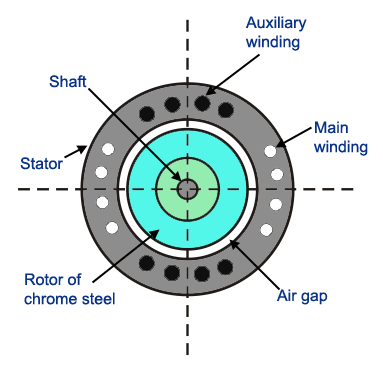
B) Reluctance Synchronous Motors
The 2nd design of Non-Excited Synchronous Motors is Reluctance which is always minimum when a piece of iron rotates to complete a magnetic flux path. The reluctance increases with the angle between them when the poles are aligned with the magnetic field of the stator. This will create a torque pulling the rotor into alignment with the pole near the stator field. The rotor poles generally have squirrel-cage winding embedded, to provide torque below synchronous speed to start the motor.
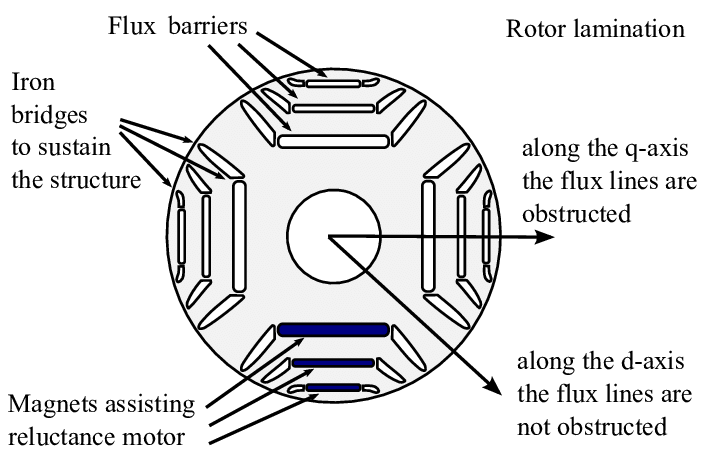
C) Permanent Magnet Synchronous Motors
A permanent Magnet Motor uses permanent magnets in the steel rotor to create a constant magnetic flux. The rotor locks in when the speed is near synchronous speed. The stator carries winding which is connected to an AC supply to produce a rotating magnetic field. Permanent magnet motors are similar to brushless DC motors.
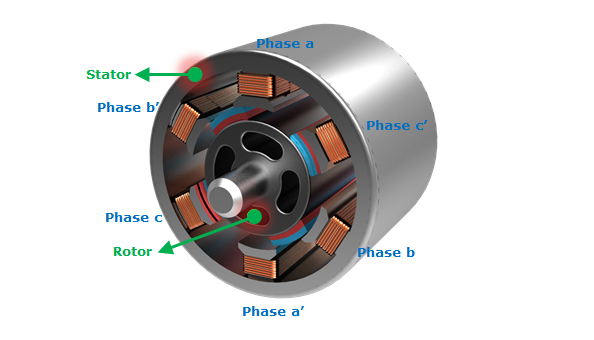
2) Direct Current (DC) Excited Synchronous Motor
DC Excited Synchronous Motor requires a DC supply for the rotor to generate a magnetic field. It has both stator-winding as well as rotor-winding. The direct current can be supplied from a separate DC source or a DC generator connected to the motor shaft.
What Are the Uses of Synchronous Motors?
Synchronous motors are generally used for applications requiring constant and precise speed. They are commonly used in positioning machines. Synchronous motors can also be utilized for robot actuators. Additionally, they can be found in watches, record players, and turntables.
Conclusion
In this article, we provided all the essential information about the different types of Synchronous motors. we brought the basic definition of what synchronous motor is and then we moved to the construction and the introduction of the components. In the final section, we talked about different types and designs of synchronous motors. We talked in detail about each type and explained the features.
If you have any experience of using any types of synchronous motors and know more about them, we will be very glad to have your opinions in the comments on our website Linquip. Moreover, if you have any questions about this topic, you can sign up on our website and wait for our experts to answer your questions. Hope you enjoyed reading this article.
ِDownload Types of Synchronous Motors PDF
You can download a PDF file of this article if you need to refer back to it at any time.
Read More In Linquip
- Synchronous Motors: Definition, Working Principle, Types, and Applications
- Why Synchronous Motor is Not Self Starting ?
- The Beginner’s Guide To Permanent Magnet Synchronous Motors
- Types of Induction Motor: A Concise and Useful Guild
- All About DC Motor Types and Their Applications
- The Construction of Synchronous Motor: All the Necessary Details You want to Read About
- 10 Types of CNC Machine + Applications & PDF
- Universal Motor: a Simple Guide to Construction, Types and Working
- 4 Different DC Motor Types and Their Applications
- What is AC Motor ? Types, Principles and Constructions
- 13 Parts of CNC Machine + Function & PDF: A Clear Guide

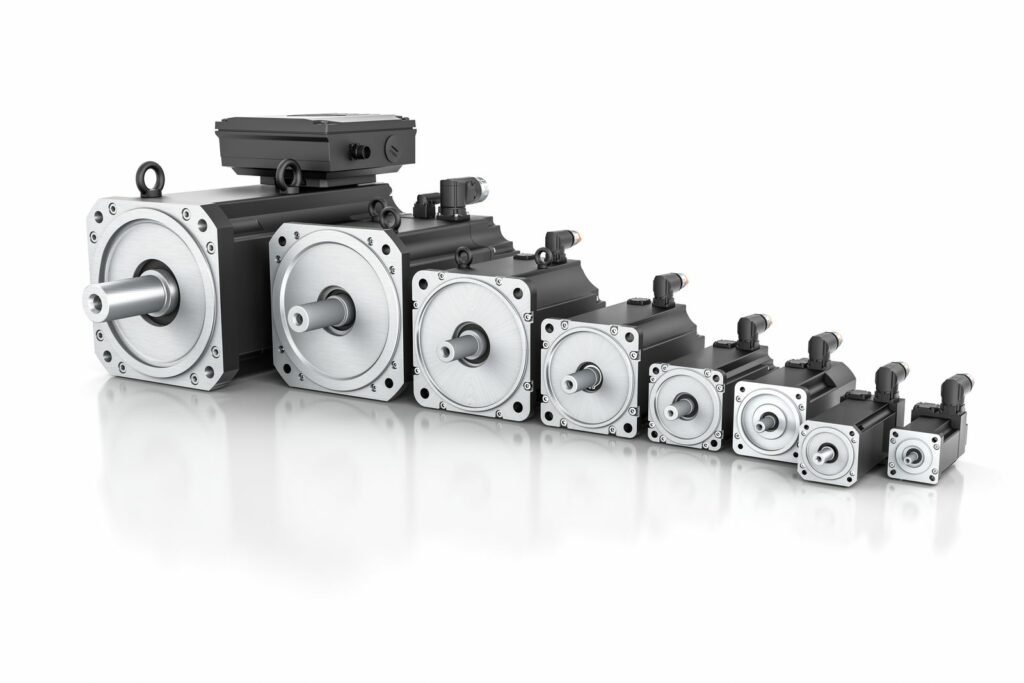
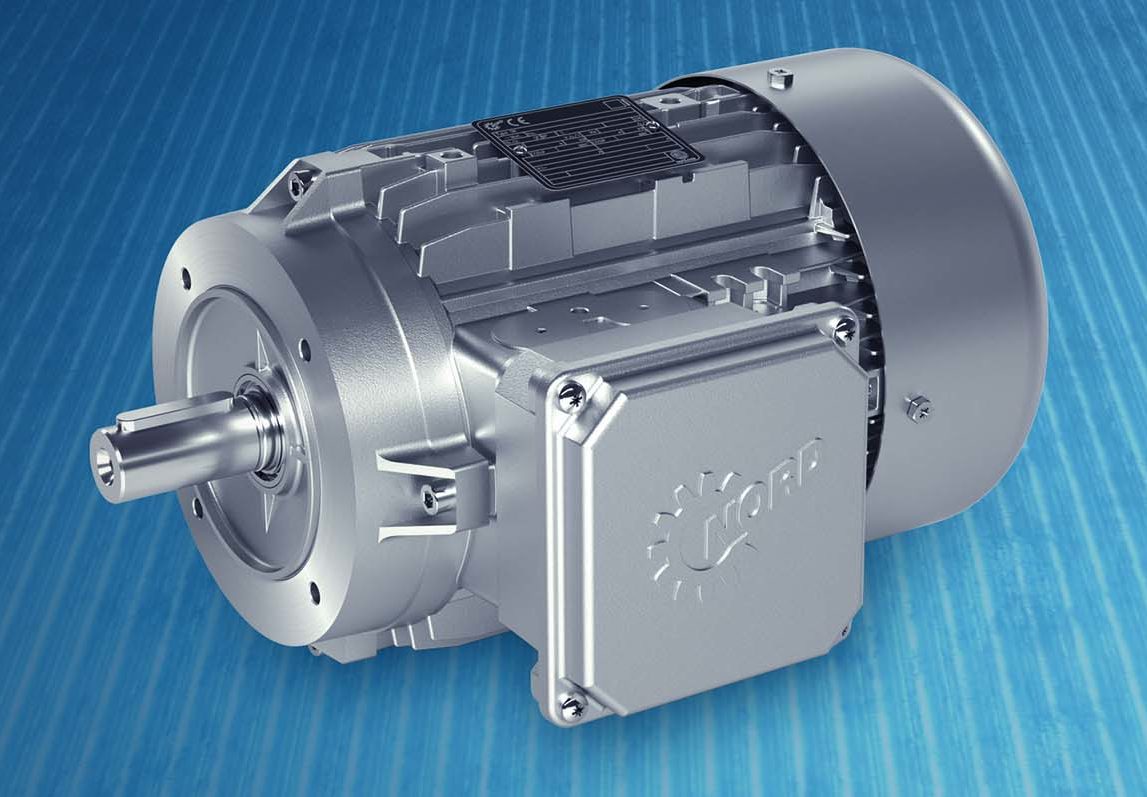
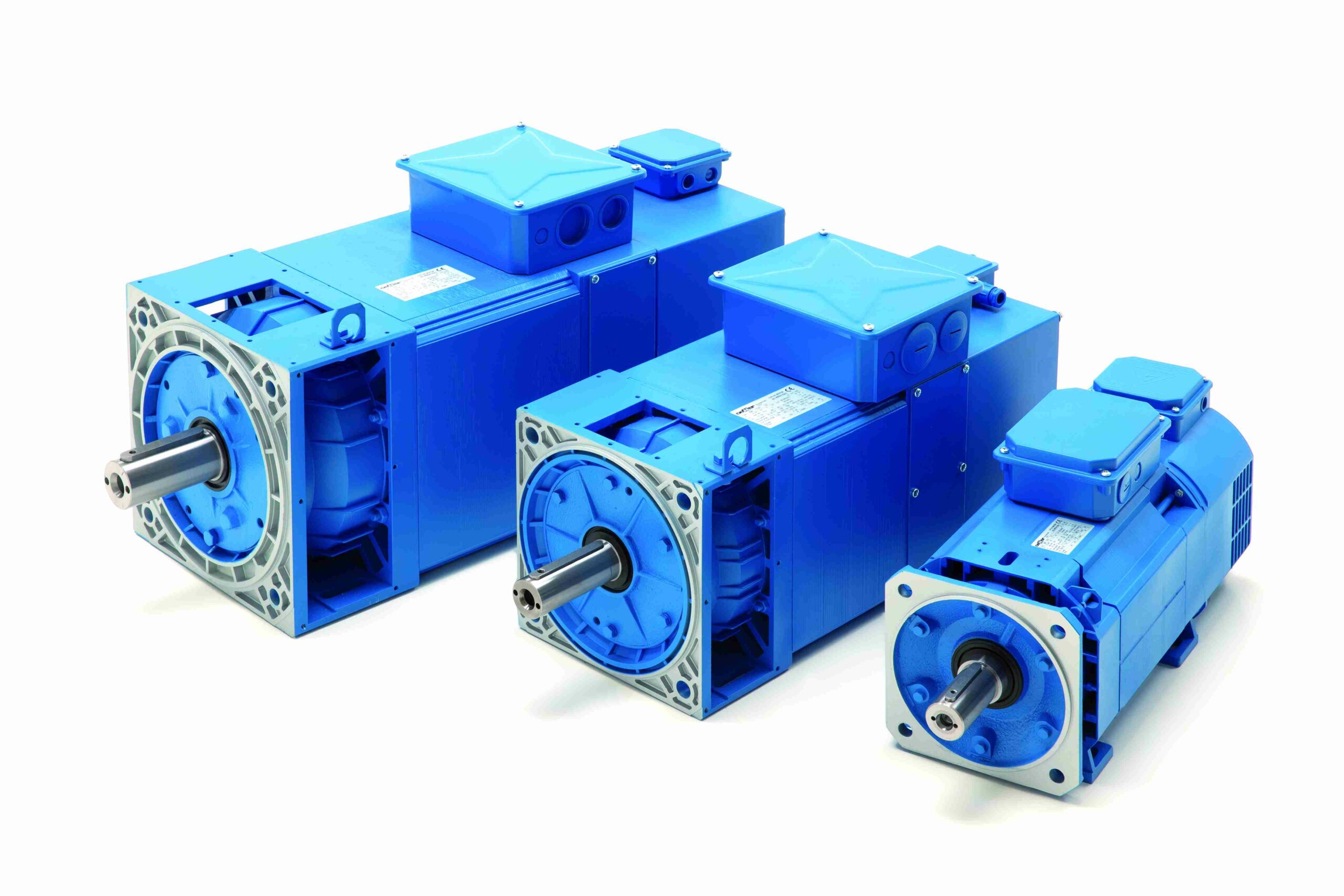


Nice notices
Arnold, we appreciate you stopping by our site and expressing your thoughts. With any luck, you’ll be able to find some of our other postings and leave some feedback there.
Pretty interesting and informative blog!!
Thanks for visiting our website, Mechtex! You can also visit the Linquip platform, where you can find thousands of equipment, companies, and experts .